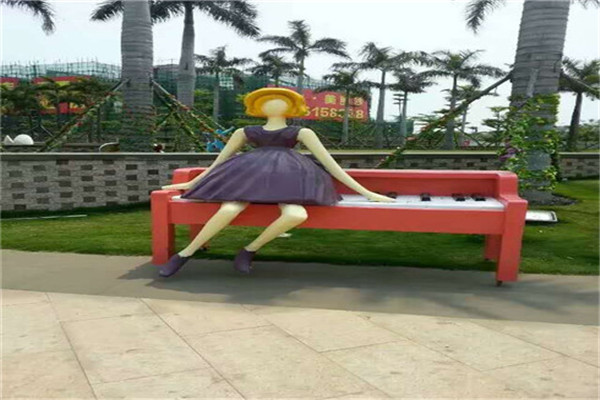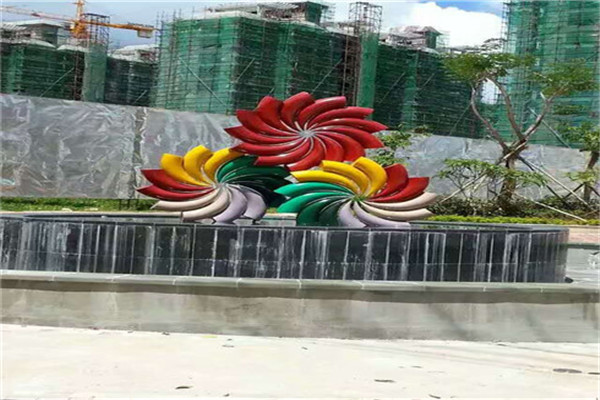
In the history of human civilization, ancient artists have used many experienced forms, including architecture, gardens, sculpture, painting, literature and so on, to make these humanistic environment spaces convey more abundant ideological connotation and show a stronger artistic charm. The overall layout of these works is rigorous and thorough, and the scenes are grand. Various artistic means, such as architecture, gardens, music, painting, cultural relics display, film slides, torch lights, waterscape lights, are mobilized. Focusing on the common theme, each of these works gives play to its unique image language, forms a sequence space that unfolds layer by layer, and enhances rendering from visual and auditory perspectives, It influences the various senses of the viewer in an all-round way. The multi-level whole process, from sensibility to rationality, has fully expanded its breadth and constantly excavated its depth, which has led people deeply into a specific mood and mood, and then promoted them to a comprehensive and profound understanding of the event. At the same time, people have experienced a complete aesthetic process. The functional nature of the large-scale art complex with sculpture as the main body is mainly the commemorative enlightenment effect.

Root carving is to create artistic works of characters, animals, utensils and other artistic images through conception, artistic processing and process, taking the autogenetic form and distorted form of tree roots (including tree bodies, nodules, bamboo roots, etc.) as the object of artistic creation. Root carving art is a kind of plastic art that finds natural beauty and shows creative processing. The so-called "three parts of labor, seven parts of nature" means that in the creation of root carving, most of the natural forms of root materials should be used to express artistic images, and a few of them should be artificially processed and modified. Therefore, root carving is also called "root art" or "root art". The basic technique of root carving is to use exaggeration, fantasy and abstraction to reflect real life. To be specific, it is to make a comprehensive and careful observation of the selected root material and make a clever idea. By virtue of its shape, texture, knots, concavity and convexity, curvature, holes, and so on, it is a bold idea to combine the virtual with the real. The line seeks the usable value of the material itself with a variety of themes and contents, and is good at finding the extraordinary from the ordinary, and gradually determines the overall image of the creation. It is very important to make clear the creative idea and imagine boldly for the root generation creation.

Relief is a kind of sculpture. The sculptor carves the image he wants to shape on a flat plate, making it separate from the plane of the original material. Relief is the product of the combination of sculpture and painting. It deals with objects in a compressed way, and displays three-dimensional space by perspective and other factors. It is only for one side or two sides to see. The reliefs are usually attached to another plane, so they are used more in architecture and can be seen on utensils and implements. Due to its compression characteristics, it occupies less space, so it is suitable for decoration in a variety of environments. In recent years, it has played an increasingly important role in urban beautification. The relief is as rich and colorful as the round sculpture in content, form and material. The materials of relief include stone, wood, ivory and metal. The relief is a semi vertical sculpture whose image shape protrudes from the stone surface (as opposed to the relief). It can be divided into light relief and high relief according to the depth of stone removal in image modeling. The bas reliefs are single level statues with relatively simple contents; The high relief is a multi-level statue with complicated contents. The carving technique and expression style of relief are basically the same as those of round sculpture. Many ancient and modern large-scale memorial buildings, high-end mansions and private houses are equipped with such decorations. Their main works are wall blocks, flower windows, dragon columns (early) and column bases.

When people talk about jade cultivation, the word "cultivation" not only tells us that jade is a living substance, but also contains a lot of knowledge. The maintenance of jade jewelry can be summarized as follows: the hardness of jade is very high, but it is easy to crack after collision. Sometimes, although the cracks cannot be seen with the naked eye, the molecular structure in the surface of jade has been damaged, with dark cracks, which greatly damages its perfection and economic value. Avoid dust as much as possible. If there is dust on daily jadeware, it should be cleaned with a soft brush; If dirt or oil stains are attached to the surface of the jade, they should be brushed with mild soapy water, and then washed with clean water. Do not use chemical degreasing agent or degreasing fluid. It is better to put it in the jewelry bag or jewelry box to avoid scratches or damage. If it is high-grade jade jewelry, do not place it on the counter to avoid dust and affect the transparency. Try to avoid contact with perfume, chemicals, soap and human sweat. If jade is exposed to too much sweat and is not wiped clean immediately after wearing, it will be eroded, causing damage to the outer layer and affecting the original brightness. Especially the "glass ground" jadeite and white sheepskin jade, which also avoid sweat and grease. Jade should be protected from the sun, because the expansion of jade in case of heat will affect its quality. Hibiscus jade, crystal, agate, etc. may even burst under high heat. Wipe the accessories with clean and soft white cloth, not with dyed cloth or hard fiber cloth. Jade jewelry inlaid with diamonds, rubies, emeralds and other precious stones should only be wiped with a clean white cloth to remove grease, dust, etc., which helps maintain and maintain the original quality. Keep proper humidity. The quality of jade depends on a certain humidity, especially for aquabilite and crystal jade. The surrounding environment shall not be too dry.

The dough figurines are commonly known as dough figurines, gift buns, flower cakes and dough figurines. It uses glutinous rice flour as the main material, mixed into different colors, and uses hands and simple tools, Chongqing Colored sculpture Create various vivid images. In the old society, the dough figuring artists "just make a living and walk around in tears", carrying suitcases, walking around villages and towns, and working in the streets, are deeply loved by the masses. However, their works are regarded as a gadget and cannot be put on the stage of elegance. Today, high quality Colored sculpture As a precious intangible cultural heritage, dough sculpture art is valued, and gadgets have also entered the art palace. The dough kneader takes materials at will according to his needs. After several times of kneading, rubbing, rubbing, and lifting, he uses a small bamboo knife to skillfully place, cut, carve, scratch, shape his body, hands, and head, and put on hair ornaments and clothes. In a moment, the vivid artistic image will be released.





